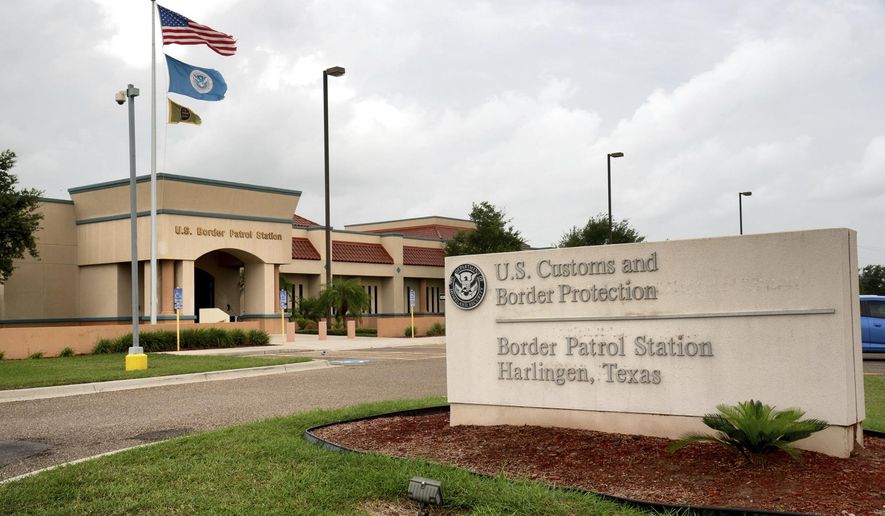Homeland Security is blaming contract medical personnel for bungling the handling of an 8-year-old migrant girl who died in Border Patrol custody last month.
The department said a nurse practitioner rejected repeated requests from the girl’s family that she be taken to a hospital.
Customs and Border Protection, the agency that oversees the Border Patrol, revealed Thursday that the family was seen at least nine times by CBP’s contract medical team as the girl complained of fever, flu-like symptoms and pain.
She was prescribed some medications and was given ice packs and a cold shower to bring down the fever, which peaked at 104.9 degrees.
But despite her condition and her mother’s entreaties, “contracted medical personnel did not transfer her to a hospital for higher-level care,” CBP said in a statement.
The death of the girl, whom The Associated Press identified as Anadith Tanay Reyes Alvarez, has sparked intense soul-searching and the investigation has already revealed troubling details.
CBP said the closed-circuit television monitoring system was out of commission at the Border Patrol’s Harlingen station, one of the locations where she was held.
The agency also had incomplete records of her treatment.
Initially, CBP had documented just three encounters with medical personnel before Anadith’s death. The agency, based on interviews with personnel on duty, now says there were at least nine.
The agency also questioned the care delivered by the medical personnel.
“Contracted medical personnel did not consult with on-call physicians (including an on-call pediatrician) about the girl’s condition, symptoms, or treatment. The contracted medical personnel failed to document numerous medical encounters, emergency antipyretic interventions, and administrations of medicine,” the agency said.
CBP said the camera system was flagged for replacement on April 13, but still wasn’t repaired on May 17, when the girl died.
The outage wasn’t reported to CBP’s Office of Professional Responsibility, which violated federal law.
Capabilities weren’t restored until May 23.
Troy Miller, CBP’s acting commissioner, called the death “deeply upsetting.”
“We can — and we will — do better to ensure this never happens again,” he said.
The girl, identified as a citizen of Panama, came as part of a family of five along with her mother, father, and two siblings, ages 13 and 14, on May 9. That was the height of the border chaos, with roughly 10,000 illegal immigrants caught by agents that day.
Anadith didn’t complain of any medical issues when caught. But on May 14, she sought medical attention and was diagnosed with the flu.
She was sent to another holding cell with her family and was given medications for the flu, but she worsened on May 17, with four separate visits to the medical unit. She complained of a stomachache, nausea and difficulty breathing.
The nurse practitioner said the girl’s pulse and pulse oximeter reading were normal, and administered medication for the nausea. But the nurse practitioner denied three or four requests from the mother for an ambulance to take the girl to a hospital.
At 1.55 p.m., on a fifth visit, the mother carried the girl, who appeared to be having a seizure, in her arms. Anadith became unresponsive and the medical team administered CPR.
An ambulance arrived at 2:07 p.m. and took the girl to a hospital where she was declared dead at 2:50 p.m.
Mr. Miller said “several” of the medical personnel involved have been banned from working in CBP facilities, and the Health and Human Services Department’s public health corps will deploy to CBP facilities next week to provide more thorough medical care.
CBP has also cut the average time in custody of families by 50% to try to prevent a repeat of the girl’s case.
Mr. Miller also said the cameras in all CBP facilities are being re-checked to ensure they are working.
That Anadith was screened in the first place and had medical care available to her is the result of a previous round of migrant children’s deaths in December 2018.
Two Guatemalan children, ages 7 and 8, died in separate instances while being smuggled into the U.S. with their fathers.
Homeland Security’s inspector general found no malfeasance by the Border Patrol in either case, but officials were so horrified by the deaths that CBP created a medical corps, employing hundreds of contract medical personnel, to do screenings and deliver better care to the illegal immigrants surging into the country.
Anadith’s death came a week after a 17-year-old Honduran boy died in the custody of Health and Human Services.
As an unaccompanied alien child, or UAC, he was caught and quickly released to HHS for placement in a shelter in Florida.
• Stephen Dinan can be reached at sdinan@washingtontimes.com.




Please read our comment policy before commenting.